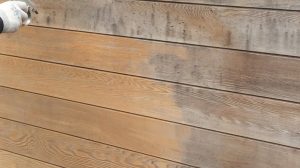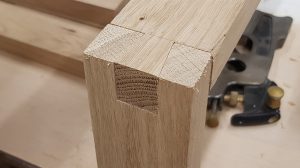In general, there are two types of people who work with wood: those who enjoy the actual process of creation (here I am referring to the satisfaction of making something swallowtail jointswhen straightening a wooden plank using manual rinser) and those who like to see their project completed. I try to strike a balance between the two, I use one for smaller projects or when time is not my friend.
A year ago, my first carpentry project was made with joints like pocket hole. Loosely translated it would be "pocket hole". Because I don't know of any synonym for this type of splice, and because its free translation simply doesn't lead us anywhere near what it represents, we'll simply call it pocket hole.

In 1986, Craig Sommerfeld was in the process of building his house and needed to find a quick way to attach frames to the kitchen cabinet enclosures. Although a toolmaker and carpenter by trade, Craig had a problem. Unwilling to attach the frames to the carcase frames with blind headed nails and then cover with putty, he designed and built the "pocket hole" template. This template allowed him to attach the frames inside the housings where the joint could be hidden.
How does it work?
The pocket hole joint involves drilling a hole at a 15-degree angle in the material to be machined and then attaching it to the second material with screws. Such devices can be found in DIY stores or online.

The drill used to drill the hole is a special one. The top of the drill is narrow to guide the screw and the bottom is wider to make the 'pocket hole'. The section where the two parts meet is flat (very important).

The screw head will be "seated" on this section, thus creating a strong joint. Equally important are the screws used, they must necessarily be self-drilling flat-head screws.

After jointing, depending on the application, the gaps can be filled with the following variants:

- The first and simplest is to use putty in the color of the material.
- The second variant is similar to the first. Mix sawdust with wood glue and use a spackle to even out the gap.
- Commercially available stoppers in sizes between 12-38 mm. They come in a wide variety of shades. Adhesive is applied to the stopper, and after it has been fixed in the hollow, the excess can be removed with a level-cutting saw.
- Similar to the previous version, but instead of plugs, dowels are used.

The question certainly arises "how strong is such a joint?".
In 2015, Matthias Wandel, a well-known online carpenter, carried out a series of strength tests on a joint of the type pocket hole. In order to make the result relevant, the same tests were carried out on two other types of classic joints: dowel joints and hollow butt joints.
For each test, two pieces of spruce were used, measuring 59 mm x 17 mm and jointed (end on edge).
| Type of joint | Breaking force (Kilogram force - kgf) |
| "Pocket hole" | 44.9(*) |
| Dowel joints | 69.4 |
| Stump and notch | 91.6 |
(*) Using wood glue the result was 50.3 kgf.
Advantages
- Wood glue is not required;
- There is no need for complex calculations and measurements, as with a butt and socket joint;
- Minimal financial investment;
- The applications can be endless. This type of joint can be used from a simple picture frame to a wardrobe;
- Time saved;
- Very small learning curve.
Disadvantages
- The joints are not as strong as the classic ones;
- Filling gaps so they are not visible;
- Less satisfaction.
If you're passionate about the DIY concept and have a minimum of tools (self-tapping screwdriver, clamps and a pocket hole device) with joints like pocket hole you can realize a multitude of projects. Good luck!



































I have seen on youtube such "tools" and look, I am amazed to find that they are also available here. I'd be glad if you could tell me how much a drill bit and a pocket hole cost, and if there are different sizes (I mean the thickness of the drill bit and the diameter of the pocket hole). Thanks in advance, M
I bought a set last year, at a price between 120-150 ron (I don't remember exactly) from Wolfcraft (the one in the picture in the article where there are two guide systems, the one on the left, the simpler one). The set contains the pocket hole guide (adjustable to the wood thickness), the special drill with stopper (also adjustable), a long bit, about 10 cm, with PH2 head (I'm not sure, but it's crosswise), some screws of different sizes, but with normal head, not flat (flat head is better, but it works too) and some dowels. I guess it doesn't rise to the level of a Kreg fixture, but for smaller projects around the house it's OK. It only has one drill bit and I haven't seen any other drill bit sets of different sizes (actually I haven't found any other sets with us) but there are DIY videos on youtube just for making the drill bit from a regular wood drill bit.
Interesting article, it's a nice job, thanks.
Where are the flat head self tapping screws for pocket holes? In the Wolfcraft Undercover Jig box there are socket head screws, which are useless (the wood cracks or the joint is not rigid).
I've searched countless websites, but I've only found (and use) 3.5mm diameter pan head screws without self-drilling; I've tried 4mm diameter screws, but the wood often cracks.
[...] As the material used is MDF and the joints are not visible, we opted for the "pocket hole" type. [...]
yes, it is interesting, and I am of the opinion that the usual joints are more resistant, in my opinion it is not worth spending 200-300 lei for a pocket hole device, you can easily make one and get away with 20-30 lei maximum, I did and it is good - do not forget the wood work and the joint with only the screw will yield, I recommend to use and 6-8 or 10mm dowels depending on the requirements with quick coupling and you will have a perfect joint that lasts long - good luck!!!